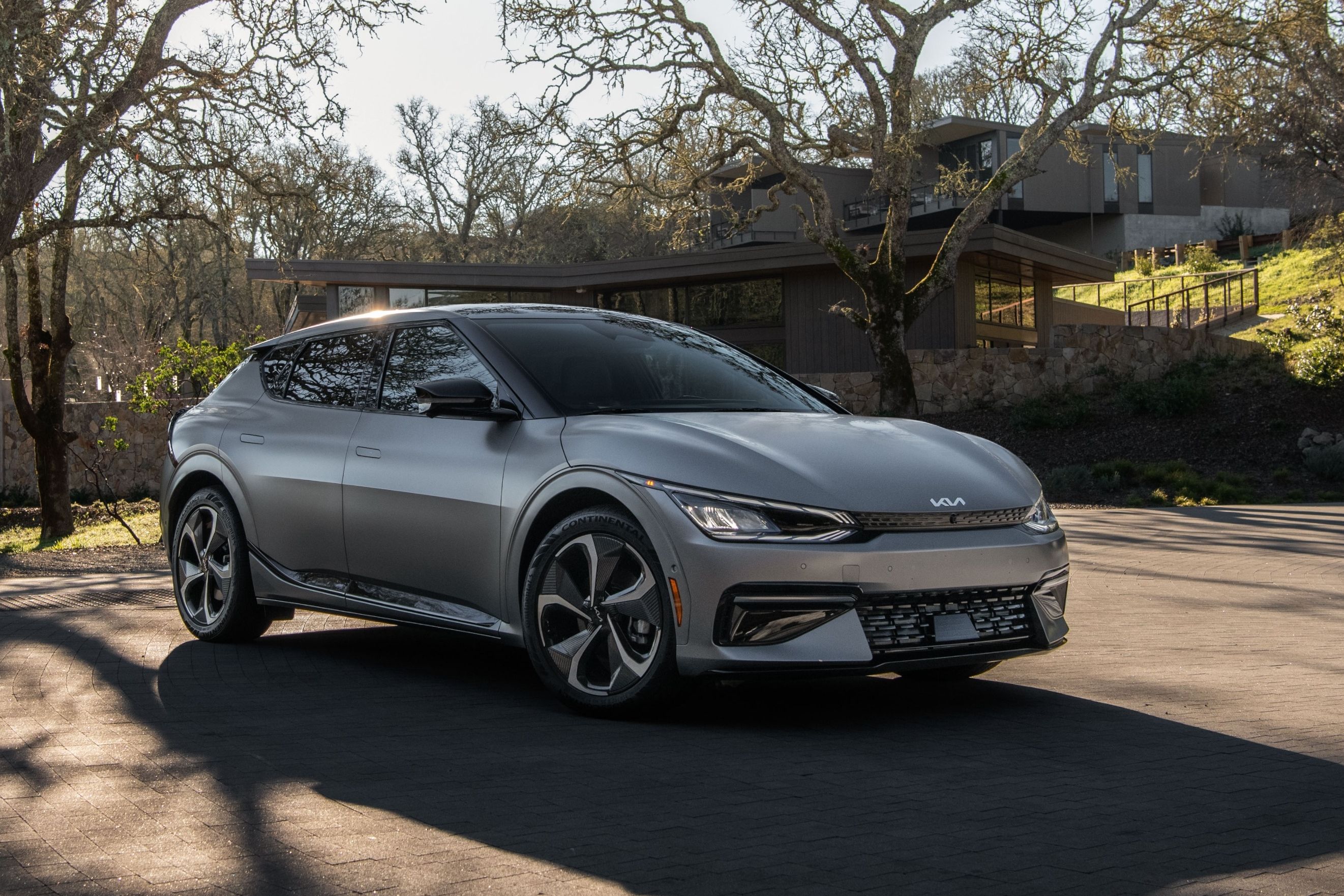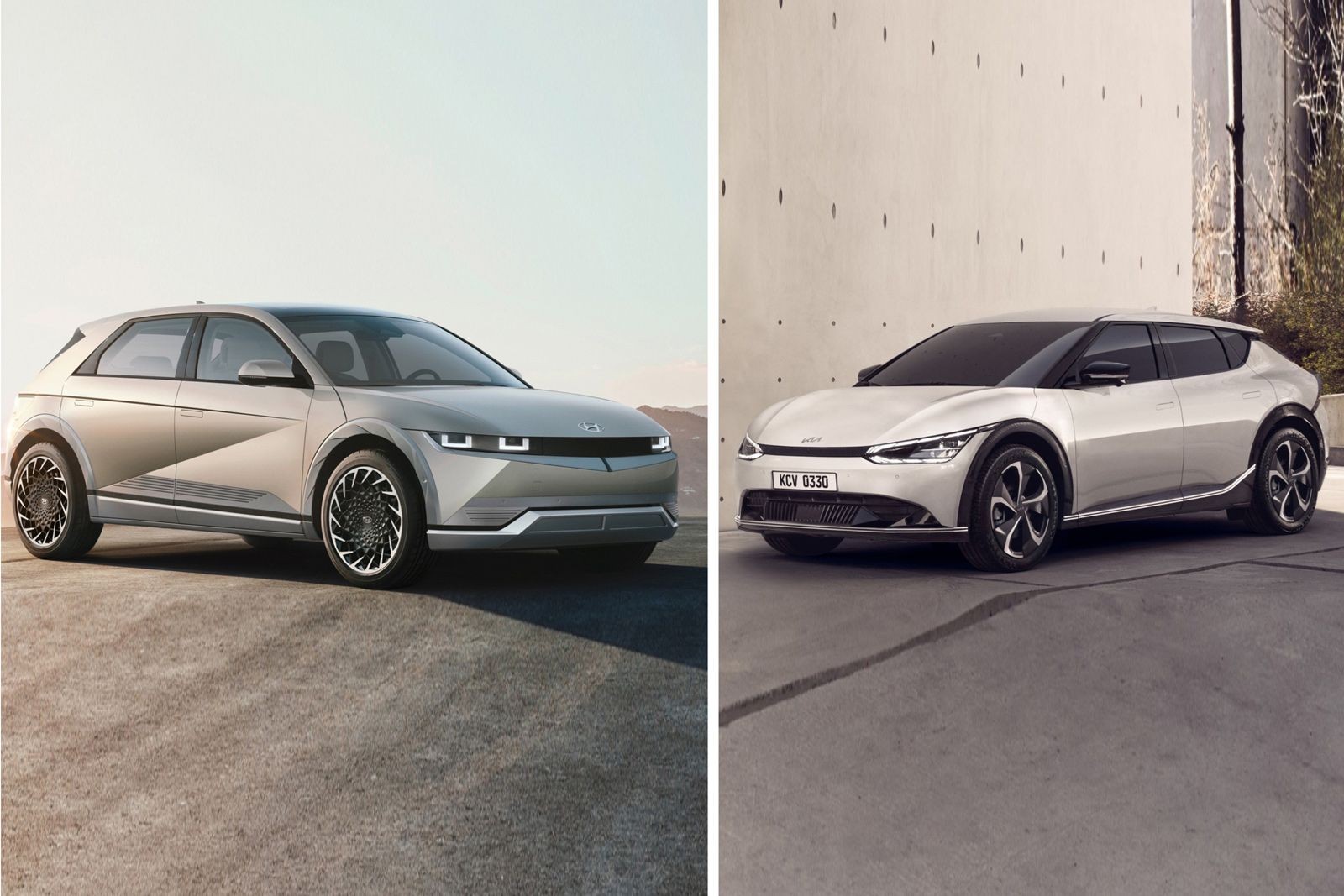
The Hyundai Motor Group is getting serious about battery-electric vehicles. The Hyundai Ioniq 5 and Kia EV6 are the South Korean automaker's first-ever dedicated BEVs with both utilizing the new Electric-Global Modular Platform (E-GMP). Consider the pair corporate cousins but, as we can clearly see, they look nothing alike.
Gone are the days of badge engineering shamelessly exploited by American carmakers. This practice has been replaced with an entirely new platform sharing method used by the entire auto industry. Hyundai and Kia have completely separate design studios and, to a certain extent, slightly different customers. Kias are aimed at younger buyers while Hyundais offer a slightly more mature look.
Regardless of one's tastes, both the Ioniq 5 and EV6 are stunning EVs with distinctive personalities. What are their key differences? Read on.
Exterior Design
It's hard to believe both EVs ride on the same platform because they look so radically different. The Ioniq 5 is based on 2019's 45 Concept car, which itself took cues from the 1974 Hyundai Pony Coupe. Call the styling retro-futuristic. The edgy styling may not be for everyone but it's great to see Hyundai making bold choices here.
The EV6, especially the supercar-fast GT variant, shares the Ioniq 5's crossover-like body style, but that's about it. It looks like it's going fast even at a standstill thanks to a more sculpted hood and dual rear spoilers. Even the wheel designs scream performance. The Kia also sports the brand's new signature front-end styling, but the Ioniq 5 lacks the jewel-like front grille found on other new Hyundais, such as the Tucson. Also noteworthy is the EV6's wheelbase measures in at 114.2 inches while the Ioniq 5's is 118.1 inches. Again, same platform but designers were clearly given the freedom to do as they pleased.
Interior Layout And Look
Both vehicles have very different interior layouts and designs than combustion-engined vehicles. That's because the E-GMP platform has no center hump but rather a skateboard-like flat surface with a floor-mounted battery pack. Maximizing space was a core requirement.
The Ioniq 5 has a lounge-like attitude with electronically adjustable seats that nearly recline flat. It also boasts a movable center console that can slide 5.5 inches rearward for easier entry and exit. There's a total of 56.5 cu. ft. of space with the second-row folded flat, whereas the EV6 has 45 cu. ft. with the same setup. Both vehicle interiors make use of recycled plastics and other eco-friendly materials.
The dual 12-inch screens, one the infotainment system display, the other a digital gauge cluster are found in each vehicle, though the Kia's has a more Audi-like appearance. The Hyundai's - dare we say - resembles Apple design. Again, these differences go to the heart of these EVs ' personalities: sporty vs. modern.
Batteries And Performance
The two have much in common here. Shared platforms means shared guts (mostly). Both come with a standard 58-kWh battery pack and a single motor layout with rear-wheel-drive. They also can accommodate 400- and 800-volt charging and 350 kW DC fast charging.
However, the Ioniq 5 has an optional 72.6-kWh unit that can be linked to a single or dual-motor setup. All-wheel drive is optional as well. The most powerful combination with AWD offers 301 horsepower and 446 lb-ft of torque with a 0-62 mph time of 5.2 seconds and a 115 mph top speed.
The top-of-the-line Kia EV6 GT, on the other hand, has a 77.4-kWh battery and standard AWD. It's literally a supercar rival with 576 hp and 538 lb-ft of twist. Zero to 60 mph takes 3.5 seconds and top speed is 161 mph. This is clearly the enthusiast's choice. The base and GT-Line can be had in RWD and AWD with as little as 167 hp and up to 320 hp.
The EV6 RWD with the long-range pack will go roughly 316 miles on the WLTP testing cycle, and the Ioniq 5, in the same configuration, will achieve just under 300 miles. Official figures for both vehicles are still pending.
Safety, Pricing, And Verdict
Safety is a priority as both come standard with forward-collision and blind-spot assistance and other advanced driver-assist systems. The Highway Driving Assist 2 semi-autonomous system, which is really an advanced type of cruise control, is brand new and both vehicles are the first within the Hyundai Motor Group to be offered with it.
Pricing has yet to be announced for either cars though they're expected to be in dealerships across the country by late summer or early fall. Both will be built in South Korea.
So, which of these two EVs is right for you? If you're looking for a high-performance battery-electric that can shame most sports cars and some supercars, look no further than the Kia EV6 GT. There is no equivalent Hyundai Ioniq 5 and probably never will be. But if you simply desire a state-of-the-art EV with competitive range, power, and technology in general, the choice boils down to style. Do you prefer retro-inspired or sporty modern? It's your call.

